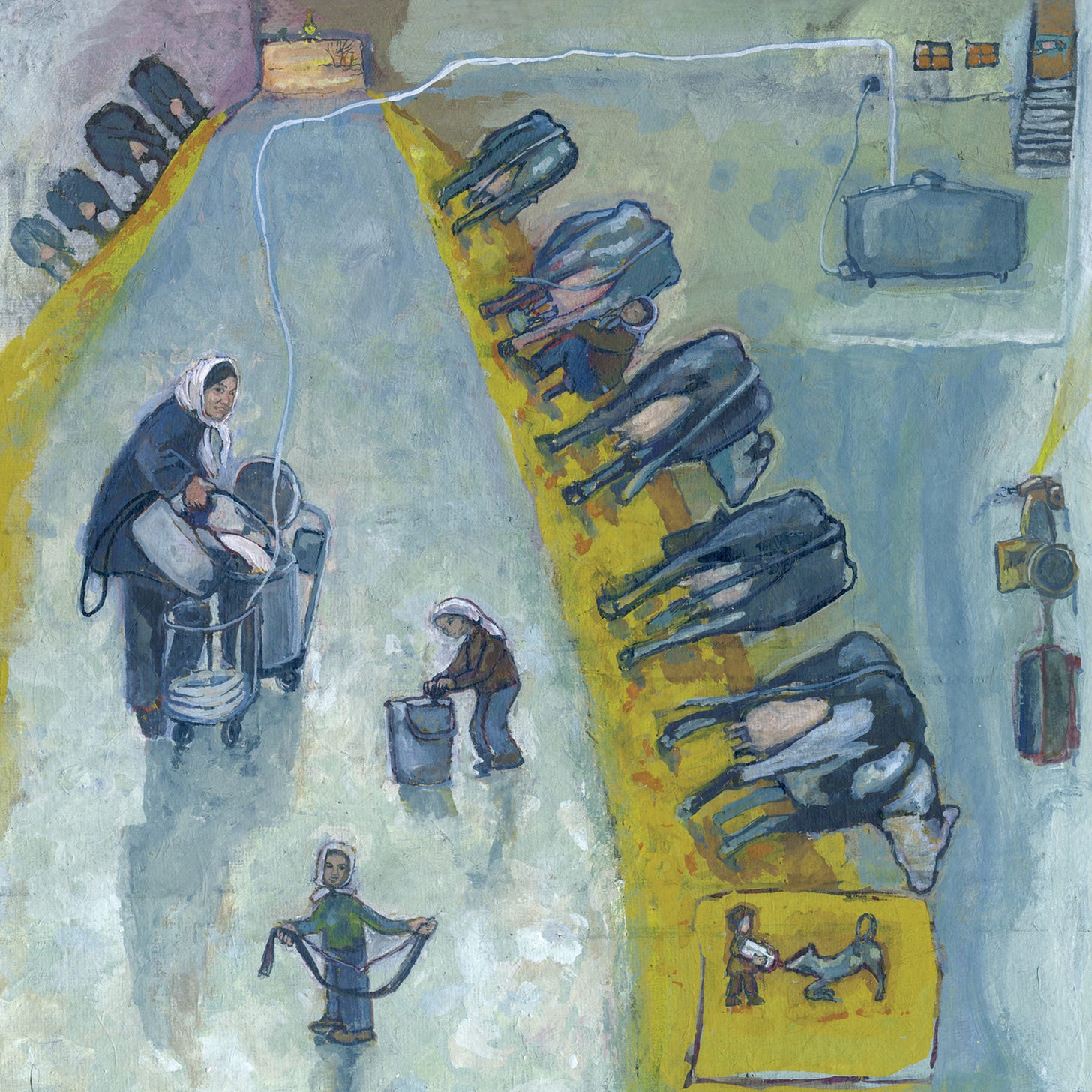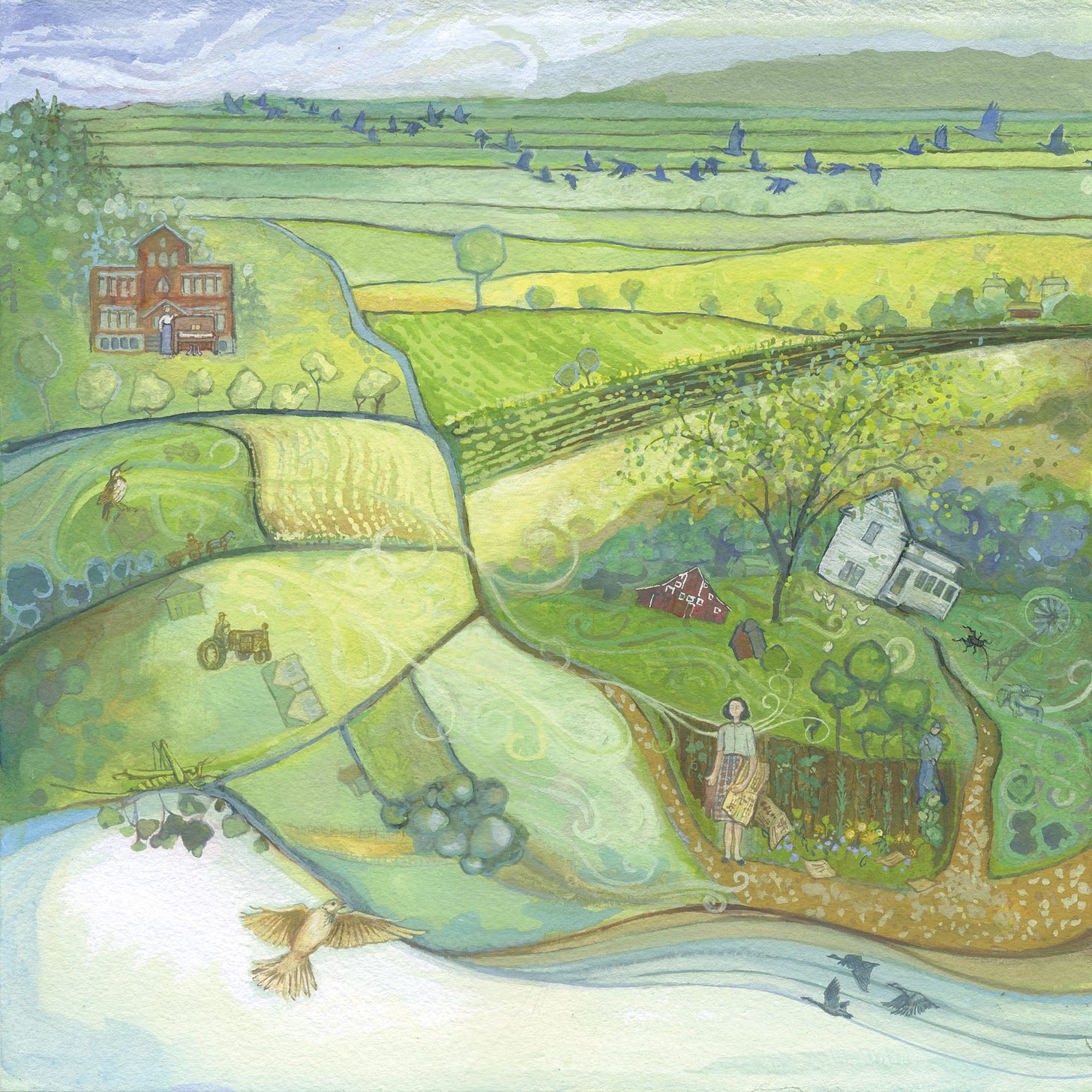As a journalist, I often overanalyze. I doubt and I am skeptical. Even at home, when John says something in passing, say while cooking dinner, I am quick to reply. “Really?” I question. “I don’t think so…” The phone comes out to check the facts, determining if he is correct or perhaps full of it, as I suspect. (Yes, this drives him crazy—because he is almost always right, he adds.)
But art is something different. To me, it is a break from the analytical, a chance to feel and experience on a visceral level outside of my thinking brain.
Which is why being involved in an art exhibit in Dubuque was a small dream come true for me. The invitation was to come to the Dubuque Museum of Art to respond to works in the exhibit “Long Time Passing: A Visual Chronicle of Farm Life in the Midwest, Past and Present.” The artists—two women from Wisconsin—were to speak and I was to then weigh in.
I was thrilled to be asked to speak about agriculture in a different way, to potentially reach a crowd outside the regular food-choir that bookstores and libraries tend to attract.
But Dubuque, while far larger than my own Lovilia, is still a bit of small-town Iowa, and to be honest, I was skeptical. My snobby I’ve-spent-a-lot-of-time-in-museums-in-NYC attitude convinced me that my expectations of “good art” would likely not be met. I would have something to say, I was sure (I always have something to say). But I didn’t expect to be impressed.
I was.
Yes, the artwork of Roberta Condon and Lorraine Ortner-Blake is colorful and technically well done, attributes you can see even online. But the display of the two works in a gallery setting—big and bold and complex, filling the walls with images and story—I had not expected. The artists showcased together in the same space also create something greater than the sum of its parts, bringing us into the past, present and, I would argue, future, all at the same time.
Lorraine’s work—based on stories her mother told her from her early years in Iowa and later Wisconsin on farms—reminded me of the stories my father-in-law Leroy told me, which I recounted in my book Bet the Farm: The Dollars and Sense of Growing Food in America. Tales of days gone by, but stories oh so relevant in our quest to understand where we are today. Lorraine’s paintings capture a moment in time, but also flip stories on their head (sometimes literally) drawing our attention to details we might have missed otherwise.
And Roberta’s large paintings, along with her titles and explanations, help viewers more fully understand the complexities of agriculture. The twenty-six images (one for every letter of the alphabet) brought up a range of topics, from the difficult finances of farm life to the beauty of geese rising over the fields. She reminds us that every decision we make has its impacts, and in farming, these impacts are never limited to the boundaries of our property. Even if we “own” the land up to our fence line, what we do on it affects those hundreds of miles away.
It is helpful to be a skeptic sometimes, to think deeply about what we are told, and to discover for ourselves the truth behind the stories. But it is also great to find a different kind of truth through art, the kind that is universal, emotive, and evocative. A special trip to Dubuque to see these two amazing artists’ work will not disappoint.
Please sign up for the Iowa Writers Collaborative Sunday Round-Up, a listing of what has been published around the state this week!









Beth, I appreciate your honesty about what you expected (or didn't) and what you saw. The paintings you shared make me want to see more of these women's art. Thank you.